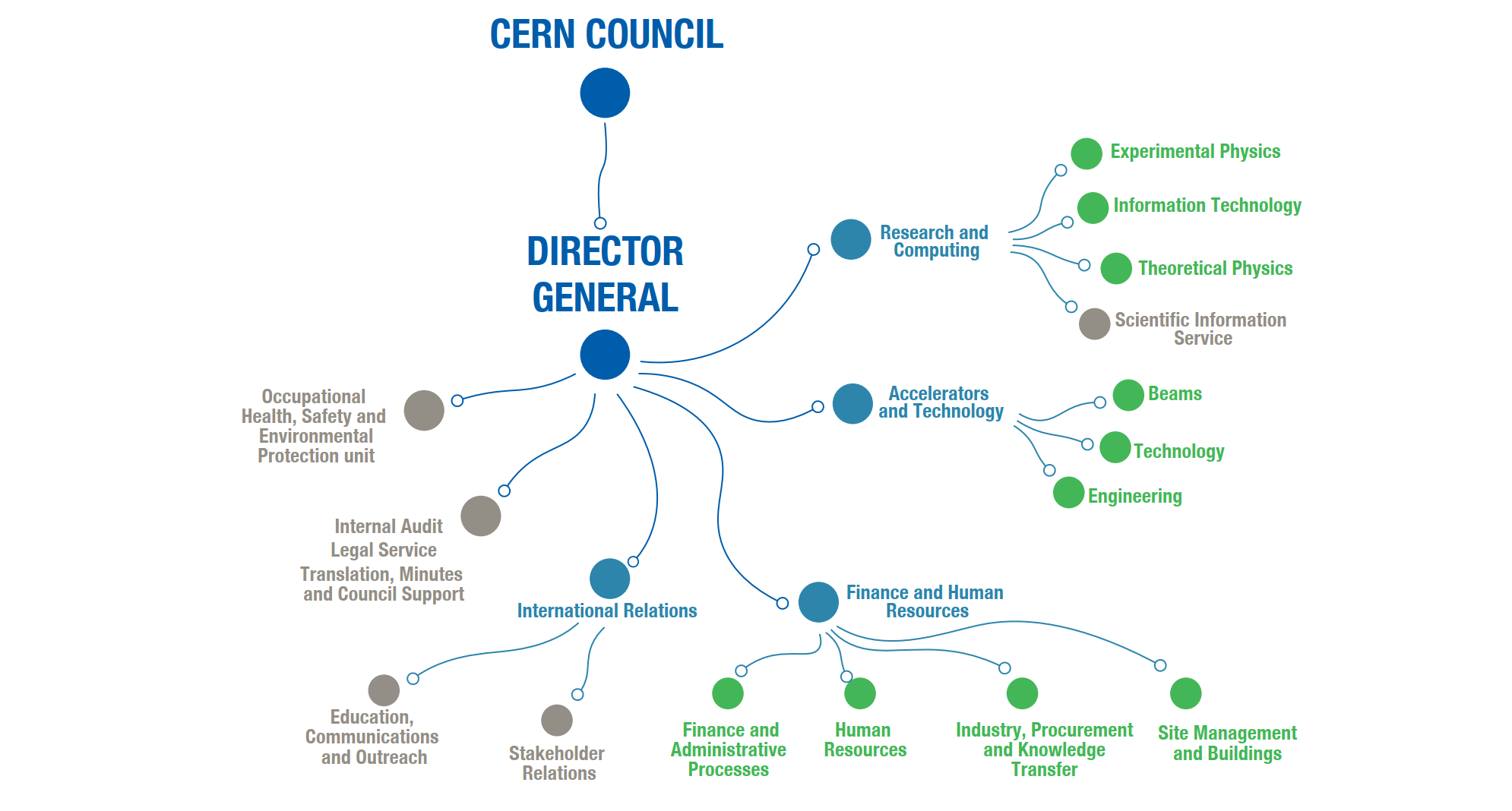Studying the elementary particles
CERN, the European Organization for Nuclear Research, is the world’s leading laboratory for accelerator-based particle physics. Its mission is fundamental research: finding out what the universe is made of and how it works. CERN operates a unique network of particle accelerators that collide various particle beams head on or direct them onto fixed targets. Particle detectors record the results of these collisions, providing data to thousands of physicists from all over the world for analysis.
A WORLDWIDE LAB
Founded in 1954, CERN is an intergovernmental organisation headquartered in Meyrin, in the Canton of Geneva, Switzerland. It is governed by its 23 Member States. CERN also brings together nine Associate Member States (as of the end of 2020) and six Observers. The Laboratory has become a prime example of international collaboration, uniting people from all over the world to advance the frontiers of science and technology for the benefit of all.
CERN has two main campuses: the original Meyrin site on the French–Swiss border and the Prévessin site in France. There are also several smaller sites situated in both countries around the 27-kilometre ring of the Large Hadron Collider (LHC) and the 7-kilometre ring of the Super Proton Synchrotron (SPS).
Close to 17 000 people from around the world take part in the Organization’s work. These include around 2600 staff members and a similar number of fellows, associates, students and apprentices. They support a vast community of users who carry out their research at CERN, comprising over 11 300 scientists of 110 nationalities from institutes in more than 76 countries.
TAKING PART IN SCIENTIFIC ASSOCIATIONS
CERN cooperates with a number of national and international scientific institutions and organisations and is represented in several scientific associations, such as the European Intergovernmental Research Organisation forum (EIROforum). CERN also has Observer status at the United Nations General Assembly.
A roadmap for particle physics in Europe
The European Strategy for Particle Physics, first mandated by the CERN Council in 2005, was updated in 2020 following almost two years of discussions and deliberations with particle physicists from Europe and beyond. The strategy guides CERN’s work and sets out a coherent and globally coordinated approach to the development of the field in Europe and at CERN.
The updated strategy highlights the importance of the environment, stating that the environmental impact of particle physics should continue to be carefully studied and minimised. It recommends that the approval process for major projects should include a detailed plan for minimising their environmental impact and that wider environmental applications for technologies developed in particle physics should actively be sought.
Procurement
Procurement has been identified as an important subject for CERN’s environmental stewardship. In 2019 and 2020 respectively, CERN spent around 532 MCHF and 441 MCHF on materials, including goods, services and supplies. This represents 43% and 38% of the Organization’s expenses respectively.
CERN shapes its own procurement rules and processes due to its status as an intergovernmental organisation. These currently involve competitive tendering and the adjudication of contracts to the lowest compliant bidder or the bidder offering best value for money. CERN strives to ensure a balanced industrial return for all its Member and Associate Member States. In 2020, CERN placed over 30 000 purchase orders. A policy on greening CERN’s procurement is being developed.
Ethics and integrity
CERN is committed to pursuing its mission of research, innovation, training and collaboration while respecting the highest ethical standards of behaviour. The CERN Staff Rules and Regulations is the overarching document for defining roles and responsibilities of the Organization and its personnel.
In addition to the Staff Rules and Regulations, the Laboratory has a fulltime ombudsperson, a Diversity & Inclusion office, and the CERN Code of Conduct. Based on integrity, commitment, professionalism, creativity and diversity, the code serves to promote excellence and respect across the Organization.
In addition to the Organization’s internal tools, CERN subscribes to a number of external initiatives, such as the EU Charter of Researchers and Code of Conduct for the Recruitment of Researchers.

GOVERNANCE
The CERN Council is the highest authority of the Organization and decides on CERN’s activities in scientific, technical and administrative matters. The Council is assisted by the Scientific Policy Committee and the Finance Committee. Each Member State has a single vote and most decisions require a simple majority.
Appointed by the Council, usually for five years, the Director-General manages CERN and reports directly to the Council. The Director-General is assisted by a Directorate composed of members proposed by the Director-General and appointed by the Council. In addition, CERN has an Enlarged Directorate, which consists of all the Directors and Department Heads.
In focus
Jasper Kirkby, spokesperson for the CLOUD experiment at CERN.

— What is the CLOUD experiment?
JK: In a nutshell, CLOUD is a large chamber where we recreate a chosen parcel of the atmosphere. A key aspect of CLOUD is that we can control all the experimental parameters very precisely at atmospheric conditions, where key vapours are found at ultra-low levels of fewer than 1 molecule per trillion. By sampling air from the chamber with state-of-the-art instruments, we observe the formation of atmospheric aerosol particles and how they grow to become the seeds for cloud droplets or ice particles. This is useful for climate science. The formation of aerosol particles and their effect on clouds is recognised as the largest source of uncertainty in current climate models. CLOUD is providing important measurements that are helping to sharpen the predictions of climate models.
Learn more
Questions regarding this report may be addressed to environment.report@cern.ch.
